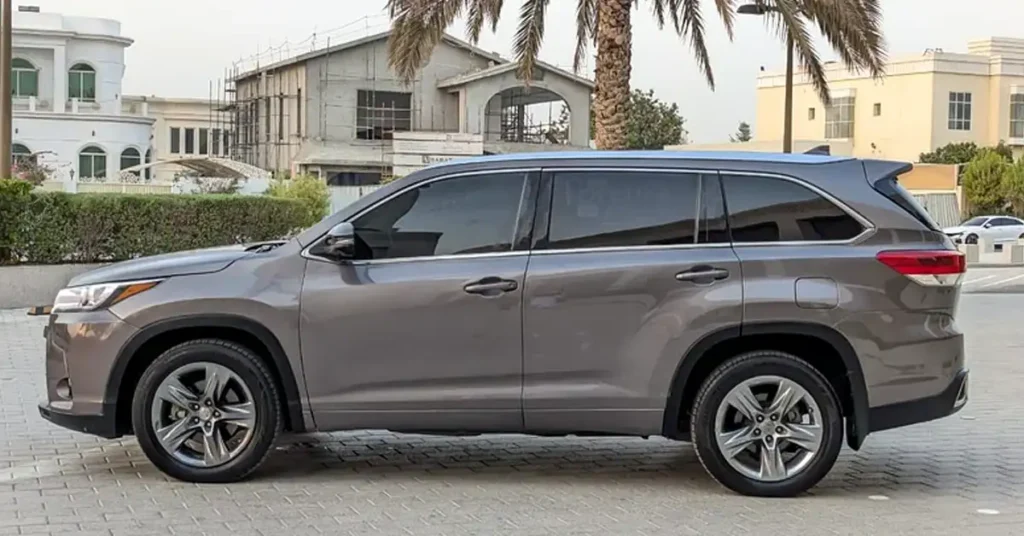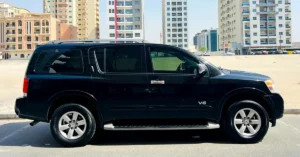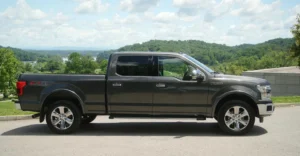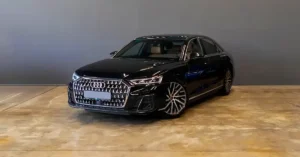Few SUVs strike a balance between comfort, reliability, and family practicality quite like the Toyota Highlander. For years, it’s been the go-to choice for drivers who want space without sacrificing refinement. Yet, even Toyota’s golden child has had its share of off years and some owners learned that the hard way.
So if you’re eyeing a pre-owned Highlander or want to keep yours in top shape, you’re in the right place. Let’s separate the good years from the headache years and explore the smart fixes that keep the Highlander running like a champ.
Why the Toyota Highlander Still Rules the Family SUV Game
Before we talk about the problem years, let’s give credit where it’s due. The Highlander has always been about dependability and everyday comfort, offering:
- A smooth and quiet ride for long hauls
- Spacious interiors perfect for families
- Optional all-wheel drive for extra grip
- Toyota’s reputation for bulletproof engines
It’s no surprise the Highlander regularly tops reliability charts but not every generation hit the mark. Some model years faced unexpected issues with engines, transmissions, and electronics.
This guide will walk you through:
- The best and worst Highlander model years
- Common problems you should know
- The fixes and maintenance tricks that make all the difference
The Best and Worst Toyota Highlander Years
Like every long-running model, the Highlander has evolved and not always smoothly.
Years to Avoid
2003, 2008–2010, 2014–2016, and 2020
- 2003: Early-generation Highlanders suffered from stripped engine head bolts and coolant leaks that could cause overheating.
- 2008–2010: Transmission hesitation and whining noises were common complaints, often linked to worn torque converters.
- 2014–2016: Owners reported excessive oil consumption, brake actuator issues, and finicky infotainment systems.
- 2020: The new generation launch came with minor teething problems from software bugs to alignment and brake feel inconsistencies.
Years You Can Trust
2006–2007, 2011–2013, 2017–2019, and 2021+ (especially hybrids)
These models represent Toyota at its best refined engines, smoother transmissions, and fewer reliability gremlins. The 2017–2019 Highlander, in particular, strikes the perfect balance of modern tech and Toyota’s old-school durability.
Common Toyota Highlander Problems Explained (and How to Fix Them)
Even the best Highlanders have quirks. Here’s what owners often face and the smart fixes that keep trouble at bay.
1. Engine Troubles From Stripped Bolts to Oil Leaks
Older Highlanders (especially 2003–2007) are known for stripped cylinder head bolts, which can cause persistent coolant leaks and overheating.
Fix: Mechanics often install oversized thread inserts or re-tap the cylinder head for a long-term repair. Regular coolant checks and high-quality antifreeze help prevent recurrence.
Oil leaks are another complaint particularly around the valve cover gaskets.
Fix: Replacing the gaskets and cleaning the PCV valve usually restores a tight seal.
2. Transmission Hesitation and Whining
If your Highlander pauses or jerks during acceleration, it’s likely due to transmission fluid wear or torque converter issues (especially in 2008–2010 models).
Fix:
- Perform a full transmission fluid exchange every 40,000–50,000 km.
- Use genuine Toyota WS fluid.
- If whining persists, a torque converter rebuild is often the permanent fix.
3. Brake System Concerns
The brake actuator in 2014–2016 models has been notorious for creating a spongy pedal feel and triggering ABS lights.
Fix: Toyota dealers have issued service bulletins for actuator replacements. For owners out of warranty, using OEM brake fluid and bleeding the system properly can extend actuator life.
Also, keep an eye on premature pad and rotor wear. The Highlander’s weight demands quality ceramic pads and regular inspections.
4. Electrical and Infotainment Glitches
If your power liftgate refuses to open or your touchscreen freezes mid-drive, you’re not alone. Electrical quirks especially in 2015–2020 models include faulty door lock actuators, sensor failures, and Bluetooth drops.
Fix:
- Perform a software update or infotainment reset.
- Check fuses and grounding points near the liftgate module.
- Replace worn actuators with updated OEM versions for lasting results.
5. Paint Peeling and Structural Issues
Sun exposure, especially in hot climates, causes paint degradation in early 2010s Highlanders (white and silver shades are the most affected).
Fix:
A professional repaint or ceramic coating helps prevent further peeling. Also, rustproofing the underbody ensures frame durability in humid or coastal regions.
Quick Problem-Solution Snapshot
| Issue | Likely Cause | Recommended Fix |
| Overheating / Coolant Leak | Stripped head bolts | Install thread inserts, monitor coolant levels |
| Transmission Hesitation | Fluid degradation / torque converter | Fluid flush every 50,000 km, converter inspection |
| Spongy Brakes | Failing actuator | Replace actuator, use OEM fluid |
| Electrical Glitches | Poor grounding / actuator failure | Update software, replace faulty modules |
| Paint Peeling | UV exposure | Ceramic coat or repaint |
Smart Preventive Maintenance Tips
If you already own a Highlander or plan to buy one regular care keeps problems from snowballing. Here’s what the pros recommend:
- Oil and coolant check every 10,000 km, especially for older engines
- Transmission fluid replacement every 40,000–50,000 km
- Hybrid system inspection every 6 months to ensure battery cooling fans are clean
- Brake fluid flush every 2 years and actuator system checks
- Undercarriage inspection for rust or corrosion, especially in imported or coastal vehicles
Pro tip: The Highlander’s hybrid variant needs periodic inverter coolant checks neglecting that can shorten hybrid battery life.
Toyota Highlander vs. Competitors
| SUV | Reliability | Maintenance Ease | Long-Term Durability |
| Toyota Highlander | ★★★★★ | ★★★★☆ | ★★★★★ |
| Honda Pilot | ★★★★☆ | ★★★★☆ | ★★★★☆ |
| Mazda CX-9 | ★★★☆☆ | ★★★☆☆ | ★★★★☆ |
| Hyundai Santa Fe | ★★★☆☆ | ★★★★☆ | ★★★☆☆ |
The Highlander isn’t the most exciting SUV to drive but it wins on consistency. Owners regularly see 300,000+ km with only routine maintenance. Try that with most rivals, and you’ll be lucky to get half as far without major work.
FAQs
Which Toyota Highlander year is most reliable?
The 2017–2019 range is considered the sweet spot for balance, features, and reliability.
Are Toyota Highlanders expensive to maintain?
Not really as long as you follow scheduled maintenance. Parts are widely available, and Toyota’s design simplicity keeps costs predictable.
How long does a Highlander typically last?
With proper care, many owners report 400,000 km or more before any major overhaul.
Is the hybrid Highlander worth it?
Absolutely. It delivers exceptional fuel efficiency without compromising performance and Toyota’s hybrid systems have proven remarkably durable.
Keep Your Toyota Highlander Running Strong with MotorHub UAE
Whether you’re maintaining a 2011 Highlander or just picked up the latest hybrid, MotorHub UAE has you covered. From diagnostic scans to brake actuator replacements, our certified partners and mobile mechanics ensure your SUV runs flawlessly without the dealership hassle.
Schedule your next service through MotorHub and experience expert Toyota care, delivered with precision. Because when reliability meets the right hands, your Highlander truly lives up to its name.



